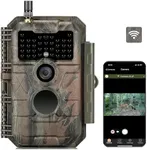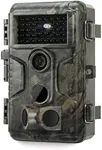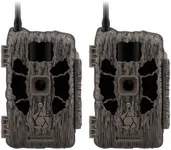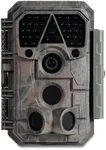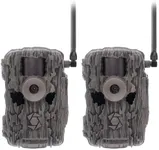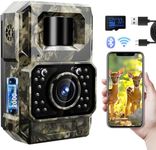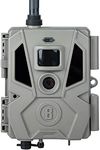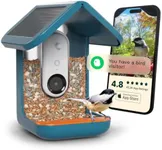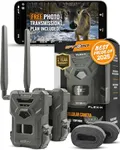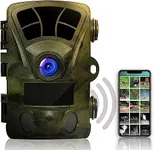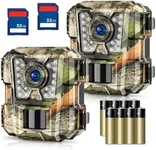Buying Guide for the Best Trail Camera For Birds
Choosing the right trail camera for bird watching can greatly enhance your experience and help you capture stunning images and videos of birds in their natural habitat. When selecting a trail camera, it's important to consider several key specifications that will impact the quality and functionality of the device. Understanding these specs will help you make an informed decision based on your specific needs and preferences.Image ResolutionImage resolution refers to the number of pixels that make up the photos taken by the camera. Higher resolution means more detail and clarity in the images. For bird watching, a resolution of at least 12 megapixels is recommended to capture fine details of feathers and colors. If you want even sharper images, look for cameras with 16 megapixels or higher. Consider your need for detail and the size of the prints or digital displays you plan to use.
Trigger SpeedTrigger speed is the time it takes for the camera to take a photo after detecting motion. This is crucial for capturing fast-moving birds. A trigger speed of less than 0.5 seconds is ideal for bird watching, as it ensures you don't miss any action. Faster trigger speeds, such as 0.2 seconds or less, are even better for capturing birds in flight or sudden movements. Think about the types of birds you are observing and their typical behavior to determine the necessary trigger speed.
Detection RangeDetection range is the distance at which the camera can sense motion and activate to take a photo or video. For bird watching, a detection range of 50 feet or more is beneficial, as it allows you to monitor a larger area. If you are observing birds in a dense forest or a small garden, a shorter detection range might be sufficient. Consider the environment where you will be placing the camera and the typical distance of bird activity.
Battery LifeBattery life determines how long the camera can operate before needing a recharge or battery replacement. Longer battery life is important for continuous monitoring, especially in remote areas where frequent access to the camera is not possible. Look for cameras with battery life that lasts several months, and consider models that support external battery packs or solar panels for extended use. Think about how often you can check and maintain the camera to choose the right battery life.
Night VisionNight vision capability allows the camera to capture images and videos in low light or complete darkness using infrared technology. This is important for observing nocturnal birds or capturing early morning and late evening activity. Look for cameras with no-glow or low-glow infrared LEDs to avoid disturbing the birds. Consider the times of day you plan to monitor and whether night vision is necessary for your observations.
Storage CapacityStorage capacity refers to the amount of data the camera can hold, typically measured in gigabytes (GB). Higher storage capacity allows for more photos and videos to be saved before needing to be transferred or deleted. For bird watching, a camera with at least 32GB of storage is recommended, especially if you plan to record high-resolution videos. Think about how often you can access the camera to transfer data and choose a storage capacity that fits your monitoring schedule.
Weather ResistanceWeather resistance indicates how well the camera can withstand various environmental conditions such as rain, snow, and extreme temperatures. This is crucial for outdoor use, ensuring the camera remains functional in different weather. Look for cameras with an IP rating of at least IP66, which means they are dust-tight and protected against heavy rain. Consider the climate and weather conditions in your area to choose a camera with adequate weather resistance.
